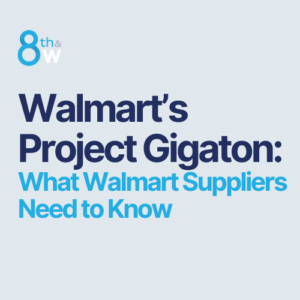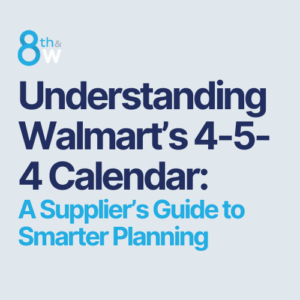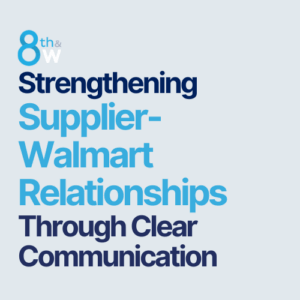Landing a feature at Walmart is a huge opportunity — a chance to drive visibility, sales, and momentum for your brand in the world’s largest retailer. Done right, it’s a win for you, Walmart, and the customer.
But we’ve seen too many suppliers jump in without a plan, only to get tripped up by execution hiccups, missed projections, or misaligned expectations.
If you want to set your feature up for success — and make Walmart excited to work with you again — here are five questions to ask your buyer (and your own team) before you say “yes.”
1. How many stores are truly expected to set this feature?
It’s tempting to assume “all stores” means 100% execution — but in reality, priorities can vary by location. Staffing, operational constraints, or competing initiatives may affect how consistently your feature is set.
Instead of guessing, ask your buyer:
- Based on past features like this, what percentage of stores actually executed
- Is this feature prioritized for field teams?
Having a realistic execution expectation helps everyone — and positions you as a thoughtful, aligned partner.
2. Who’s responsible for in-store support?
Execution is where good plans succeed or fail. If you don’t plan for in-store merchandising support, your set rate could drop to 30–40%. Even approved third-party providers need clear direction and communication.
Clarify:
- Will Walmart’s team handle the set, or should you engage your own service provider?
- If you’re investing in support, is that baked into the plan?
The more support you build in, the better your feature performs — which benefits both you and Walmart.
3. Is the item part of the modular (mod) or a one-off feature?
Features tied to modular placements tend to execute more reliably because they’re integrated into the store’s regular flow. Standalone, non-replenishable features can work — but they often get deprioritized when other demands arise.
Ask:
- Does this feature support an existing mod item or stand alone?
- How does it fit into Walmart’s larger inventory and strategy?
This shows you’re thinking long-term, not just chasing one-off sales.
4. How are sales projections and goals being calculated?
Features at Walmart come with sales expectations — even if execution isn’t 100%.
Ask:
- Are projections based on 100% sell-through at full retail?
- Are markdowns or backstock factored in?
- Who carries the markdown liability — and under what terms?
Not all features are created equal. Each feature can carry different expectations, markdown schedules, and supplier responsibilities. That’s why it’s essential to negotiate the terms of every feature up front and in writing.
When you understand how Walmart is measuring success, you can build smarter forecasts and avoid surprises later.
5. What resources beyond the shelf will help this feature succeed?
Walmart is investing in you — meet that investment with your own. Features perform better when they’re supported with marketing and visibility tools.
Consider:
- Shelf blades, signage, or secondary displays
- Digital support, advertising, or sampling
- Verification and follow-up from your team or broker network
The more customers notice, the more they buy — and the more Walmart sees you as a supplier who delivers.
The Bottom Line: Be a Strategic Partner
Walmart wants you to succeed — but success doesn’t happen by accident. Before you say “yes,” ask the right questions, build the right plan, and bring your team along for the ride.
At 8th & Walton, we’ve helped suppliers of all sizes plan and execute winning features at Walmart. We can help you think through every angle — from the P&L to in-store execution — so your next feature delivers results worth repeating.
Ready to make your next feature a win? – Connect with our experts today. Just fill out the short form below, and we’ll help you plan your feature with confidence and clarity.



